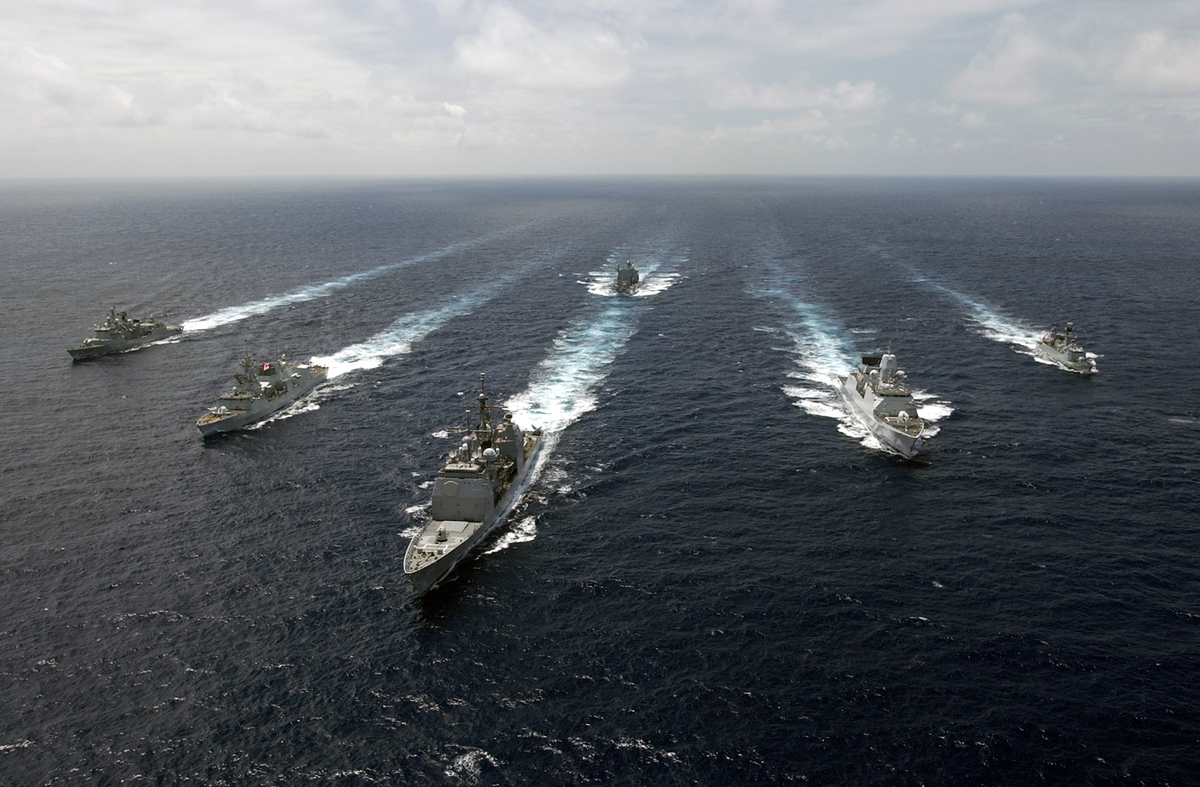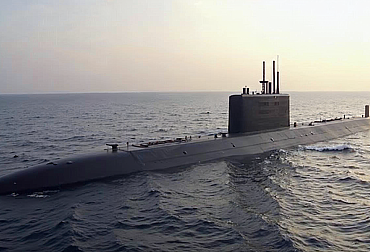NATO Maritime Force Technological Transformation: from Traditional Operations to a 21st Century Integrated System
At a time of continuously increasing geopolitical tensions and the changing nature of maritime threats, the North Atlantic Alliance is undergoing a fundamental technological transformation. This transformation goes far beyond the mere modernization of existing systems - it represents a comprehensive rethinking of how NATO provides maritime security in the 21st century. As the key guarantor of security, the Alliance is systematically integrating conventional maritime capabilities with new technological areas, from artificial intelligence to quantum technologies to cyber security, while actively engaging all Member States regardless of their geographic location or naval force size. Landlocked nations, including the Czech Republic, bring valuable expertise in advanced technologies and contribute significantly to shaping the new shape of NATO maritime operations.

Historical context and development
The development of naval technology has gone through several significant stages since the end of the Cold War. Between 1990 and 1995, the Alliance focused primarily on the modernisation of command and control systems, leading to the introduction of the first digital naval communications system, NICS. The following period 1995-2000 brought a revolution in satellite navigation and tracking, symbolised by the full operationalisation of the GPS system for civilian use and the introduction of the first digital mapping systems in the navies of NATO member states.
The turn of the millennium marked a major shift towards networked operations. The Alliance's Networked Capabilities Programme, launched in 2002, laid the foundations for the digital transformation of naval forces. The terrorist attacks of 11 September 2001 led to the creation of Operation Active Endeavour (later renamed Guardian of the Seas), the first counter-terrorism maritime operation in NATO history, which accelerated the development of new surveillance technologies.
The period 2005-2015 was characterised by the fight against piracy off the coast of Somalia (Operation Ocean Shield). This experience led to the development of the first operationally deployed remotely operated maritime systems and improved maritime situational awareness technologies. A significant milestone was the creation of the NATO Maritime Enterprise Network in 2012, which for the first time enabled fully integrated data sharing between the naval forces of member states.
The period 2015-2020 brought major breakthroughs in the field of artificial intelligence and autonomous systems. In 2016, the Alliance adopted the first comprehensive strategy for the use of autonomous systems in naval operations and launched the Maritime Unmanned Systems Programme. At the same time, there has been a significant modernisation of air defence systems and the integration of maritime and air defence capabilities.
Recent developments since 2020 are characterised by an emphasis on quantum technologies and cyber security. In 2021, NATO adopted a comprehensive strategy for Artificial Intelligence in Naval Operations and launched the Quantum Naval Technology Programme. The year 2022 brought the creation of the Maritime Autonomous Systems Centre and 2023 saw the launch of the Next Generation Maritime Cyber Defence programme. At the same time, intensive development of systems to protect critical undersea infrastructure and communications networks is underway.
Last year, 2024 represented another major shift in integrated maritime operations. NATO focused on the deployment of artificial intelligence systems to anticipate maritime threats and coordinate multinational maritime formations. Particular emphasis was also placed on the development of adaptive defence systems and technologies for operations in the polar regions, which are becoming increasingly strategic. At the same time, naval communication systems were upgraded using quantum encryption and advanced sensor networks for maritime surveillance were developed.
Background and starting points
The maritime dimension is a crucial element of the global security architecture and has grown dramatically in importance in recent years. According to the latest figures from the International Maritime Organisation, 80% of world trade by volume and 70% by value takes place by sea. Moreover, this share is increasing every year, mainly due to the expansion of maritime trade in the Indo-Pacific region and the growing importance of maritime transport of raw materials. Disruption of key shipping routes can have immediate and far-reaching consequences for the world economy, as the Red Sea and Suez Canal incidents have shown in recent years.
The protection of sea lanes is becoming particularly critical in the context of rising tensions in key maritime areas. The current situation in the South China Sea, the Strait of Hormuz and the Eastern Mediterranean requires the continued presence of naval forces and their ability to respond rapidly to emerging threats. In addition to traditional security challenges, new forms of threats are emerging, including cyber-attacks on maritime infrastructure, the use of unmanned systems to disrupt maritime traffic, and the growing importance of subsea space for critical communications infrastructure.
In response to these challenges, NATO Maritime Command is implementing a comprehensive technology transformation programme. This programme includes not only the modernisation of traditional naval capabilities, but more importantly the development and deployment of new technologies to ensure the Alliance's maritime superiority. Particular emphasis is placed on the ability to effectively counter hybrid threats, to ensure the cyber security of naval systems and to exploit the latest technological innovations to enhance situational awareness in the maritime domain. In doing so, NATO is actively engaging all Member States, including landlocked ones, in the process of technological transformation of naval forces.
Technology development in the NATO context
The technological development of NATO's naval systems has its roots in the 1970s, when the Alliance's Sea Sparrow programme for the development of naval defence systems was launched. This programme laid the foundations for international cooperation in naval technology. The late 1970s brought the creation of the first standardised NATO communications system for naval forces, followed in the mid-1980s by the introduction of the first digital radar systems.
The current decade brings a revolution in the form of artificial intelligence and quantum technologies. Recent developments include the adoption of a comprehensive NATO strategy for artificial intelligence and the launch of the Maritime Autonomous Systems programme. The Quantum Technologies for Maritime Applications programme represents the next step in the technological transformation of NATO naval forces.
Main content section
The NATO Maritime Command is currently undergoing a major technological transformation based on the introduction of advanced command and control systems. These systems integrate the naval, air and space assets of Member States into a single operational entity, using the latest artificial intelligence technologies for data processing and decision support. Central to this transformation is NATO's Remotely Piloted Autonomous Maritime Systems programme, which significantly enhances maritime reconnaissance and surveillance capabilities. Czech research institutes are contributing to the programme by developing analytical tools, especially in the area of processing large data sets.
A major breakthrough in maritime technologies is the systematic introduction of quantum technologies into naval operations. NATO's main focus is on the development of quantum sensors and quantum-secure communications, which significantly enhances the Alliance's maritime surveillance and secure communications capabilities. These technologies are closely linked to the comprehensive cyber defence system for the maritime domain that NATO is building under the Maritime Security Programme. This system not only ensures the protection of critical maritime infrastructure and communications systems, but also provides an effective defence against cyber-attacks. Czech academic institutions are making significant contributions to research into these advanced technologies, particularly in the areas of quantum communications and cyber security.
The technological transformation also includes an emphasis on environmental monitoring and climate safety. NATO is deploying advanced systems for monitoring the marine environment, using an extensive network of automated measuring stations and satellite observations. These systems are linked to the latest materials research being conducted under the NATO Science Programme. The research focuses on the development of more durable and efficient materials for the construction of vessels and naval systems, with Czech research institutes specialising in the development of special surface treatments and composite materials resistant to the extreme conditions of the marine environment.
An overarching element of the whole technological transformation is the use of artificial intelligence, which permeates all aspects of maritime operations. NATO is developing its use in line with its comprehensive strategy for artificial intelligence, with machine learning systems finding application primarily in sensor data analysis and decision support. These systems enable the rapid processing of vast amounts of data from multiple sources and provide commanders with a comprehensive, real-time view of the situation. It is in this area that the contribution of the Czech expert teams developing advanced algorithms for data analysis and optimisation of decision-making processes is strongly manifested.
Reflection
The technological transformation of NATO naval forces presents an unprecedented opportunity to rethink traditional approaches to maritime security. Whereas in the past, maritime superiority was based primarily on fleet size and firepower, current developments are moving towards a comprehensive system of interconnected capabilities. This transformation opens up space for new forms of cooperation between Member States, where each can contribute its unique strengths regardless of geographical location or size of naval forces.
It is precisely the diversity of approaches and experiences of individual Alliance members that creates a unique environment for innovation. Landlocked states, unencumbered by traditional maritime doctrines, can bring novel solutions and perspectives to maritime security. Their perspectives, shaped by their different security challenges and technological experiences, can be key to identifying new ways to apply advanced technologies in the maritime environment.
Of particular importance is the ability to bridge seemingly unrelated technological domains. For example, experience in protecting critical infrastructure inland can provide new approaches to securing maritime communications systems. Similarly, expertise in artificial intelligence and data processing, originally developed for other purposes, can fundamentally transform the way naval forces assess situations and respond to threats.
The increasing complexity of the security environment also requires a new approach to training and preparing personnel. The traditional division between maritime and land specialties is gradually giving way to the need to create teams capable of operating across different operational domains. In this context, the educational and research institutions of landlocked nations can make an important contribution to the development of new training methods and approaches that better meet the requirements of integrated maritime operations.
Conclusion
The future of maritime security within NATO is towards a flexible and resilient system that can anticipate and respond to challenges not yet known. This is not just about technological superiority, but more importantly about the ability to link different approaches to maritime security across Member States. While littoral states bring irreplaceable experience of practical maritime operations, landlocked states offer an innovative perspective unencumbered by traditional maritime doctrines.
It is this mix of different perspectives that creates a unique opportunity for the development of new operational concepts. For example, the Czech Republic is contributing to the development of adaptive management systems that can change the way naval forces respond to unexpected situations. This approach, combining theoretical knowledge with practical requirements, opens up new possibilities for increasing the effectiveness of naval operations.
A key element of future success will be the Alliance's ability to create an environment conducive to rapid innovation. This involves not only technological development, but also a transformation in the way we think and approach maritime security. The emphasis is shifting from the traditional model of a large naval force to a more flexible system that can rapidly integrate new technologies and adapt to changing threats.
In the long term, NATO's ability to link technological innovation with strategic thinking will be critical. This requires the creation of a new framework for sharing knowledge and experience that crosses the traditional boundaries between naval and land forces. The Alliance needs to develop mechanisms that allow for the rapid identification and integration of promising technologies, regardless of whether they come from any member state. This approach will not only strengthen collective defence but also create new opportunities for technological cooperation between Member States.








